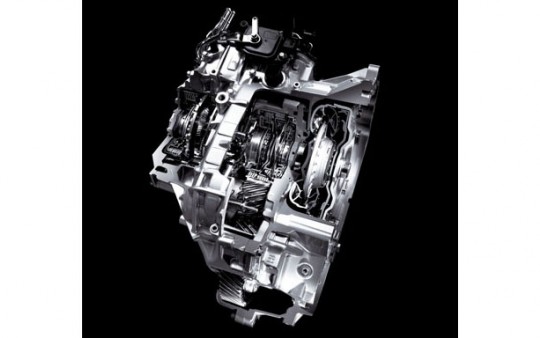Hyundai’s 6-speed Transaxle Automatic Transmission
Hyundai is turning out to be a global contender in every respect. They announced their ultra modern diesel engines, the Kappa petrols, the genesis coupe, then we had some news on the 8 Speed auto box that they are developing and now we have news on their all new 6 speed transaxle automatic transmission.
Transaxles are a type of gearbox arrangement where the gearbox is at the back and engine at the front. This helps weight distribution and as well, makes the car sporty. Hyundai say that this will help it achieve cleaner emission regulations and better fuel economy, by as much as 12.2%!
Designed for transverse engine applications in passenger cars and SUVs, the new compact transaxle puts Hyundai into an elite class of auto manufacturers who have designed their own proprietary 6–speed automatic (after Toyota and a GM/Ford joint venture) demonstrating Hyundai´s advanced powertrain engineering capabilities.
“The strength of our design is its totally unique layout which makes it smaller, more compact and lighter than any other 6–speed on the market today,” said Hong–Min Kim, the project manager of the transaxle at Hyundai Motor´s R&D Center. This specific engine, Hyundai say is so advanced that they have applied for more than 300 patents for this engine alone.
The transaxle will first arrive in the new Hyundai Grandeur/Azera equipped with a 3.3–liter V–6 Lambda engine. In this application, it delivers a 12.2 percent gain in fuel economy (10.1km/l versus 9.0km/l) and is 2.5 percent quicker in zero to 100km/h acceleration times (7.8sec versus 8.0 sec). It also delivers an 11 percent improvement in 60km/h to 100km/h passing performance (4.0 sec versus 4.5 sec).
This maintenance free unit is not equipped with a dipstick as it is filled with an automatic transmission fluid that is good for the life of the vehicle thereby reducing maintenance costs.
Developed over a four year period, this new 6–speed automatic gearbox offers numerous technical merits. Despite an extra gear, it´s 12kg lighter than the 5–speed it replaces. It also is 41mm shorter and considerably simpler having 62 fewer parts, which is a key to increased durability and lower cost.
The availability of 6 gears enables closer spacing between gear ratios providing a better balance of performance and fuel economy while the wide overall gear ratio helps deliver strong acceleration. The gearbox has three planetary gearsets whose hallmark is simplicity of design and a unique flat torque converter which shortens the unit´s overall length by 12mm. Four pinion differentials improve durability and further minimize size.
Another example of engineering ingenuity is to be found in the design of the hydraulic pressure control unit. Because there are always slight manufacturing deviations from one solenoid valve to the next which cause fluctuation in the hydraulic pressure and affect shift precision and quality, the transaxle features cleverly integrated adjustment screws in the valves which enable each of the eight valves to be calibrated at the factory.
This novel feature ensures stable hydraulic pressure at any shift point which facilitates a high degree of precision and control needed to deliver ultra–fast, smooth and precise shifts throughout the rpm range.
Source : Hyundai


